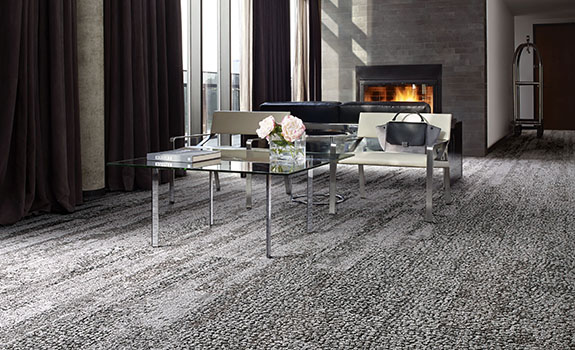Ever since E.O. Wilson introduced the notion of biophilia in his 1984 book of the same name, there has been mounting evidence that humans are innately drawn to the natural world. It has been proven that views of nature enhance healing and that natural light promotes better learning.
Clearly, our connection with nature has a pervasive influence. And, design can be used to very effectively bridge the gap between the natural world and even the most urban environments. This phenomenon has been explored and documented in the workplace, in classrooms and in health facilities, where it shows a direct relationship to increased productivity, creativity and wellbeing. This has sparked great interest in how biophilic design might enhance the guest experience in hospitality.

Design can be used to bridge the gap between the natural world and even the most urban environments. (Product: Human Nature Collection)
Biophilia in hospitality
When asked about what impact the global trend towards biophilia is having on the hospitality industry, Lorraine Francis, director of hospitality interiors for Gensler, takes a long pause. “I feel passionate about that and I have an idea about the design science of things, but I think it’s been hard to articulate within the hospitality market.” She cites studies that have been done for the healthcare sector that examine how certain healing and wellness initiatives make financial sense by resulting in less PTO, for example.
But when it comes to hospitality, there is currently very little quantified evidence to support biophilia. Which is why Francis is embarking on a research project in collaboration with several industry peers to come up with the metrics to make that possible.
The goal of this project boils down to figuring out how to measure comfort, which translates into longer stays and increases repeat business. “You know when you walk into a space and you feel good, and when you walk into a space and you feel like it’s too tall or too wide or there’s some mechanical thing overhead that makes you feel creepy,” she explains. “It’s really hard to express that feeling, but that’s exactly what we need to interpret for the hospitality industry, because this kind of very fundamental reaction is what affects loyalty and, ultimately, dollars.”
Applying biophilic design to hospitality spaces
This means examining every part of the guest room experience, from the bed to the pillows to the alarm clock, and understanding how the neurological system is affected by a direct connection to nature, whether through a window view or a carpet design. Studies exist that look at the number of steps taken to complete certain tasks; track where people gravitate to in a room; and determine where they sleep better.

Measuring the comfort of a space means examining every part of the guest room experience and understanding how the neurological system is affected by a direct connection to nature, whether through a window view or a carpet design. (Product: Springtime in Paris)
But Francis also sees the need to understand how this plays out in lobbies and indoor/outdoor public spaces. “How do you get around those long corridors? How do you let light in?” The answers to these questions are sure to illuminate a new, nature-inspired path in hospitality design—one that leads to a more efficient, more sustainable and much more comfortable world.
One key touchpoint for Francis is Bill Browning’s 14 Patterns of Biophilic Design, published in 2014 by Terrapin Bright Green, which thoughtfully expounds upon “the relationships between nature, human biology and the design of the built environment.” To facilitate the transition from research to application, it posits a system of patterns that encourages the widespread design implementation of biophilia. “The way that Bill looked at biophilic design for office spaces is a model for our approach to hospitality,” says Francis, “and we need to make biophilia a bigger part of the conversation in this industry.”



